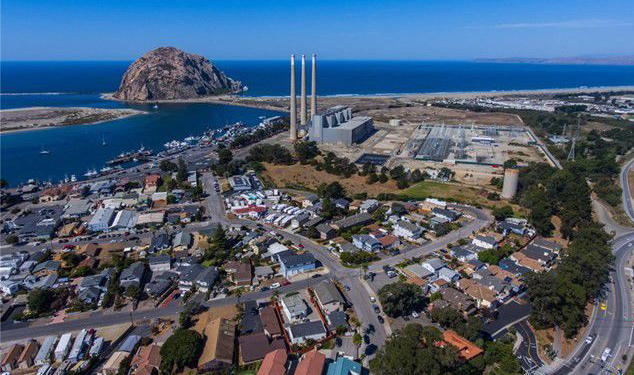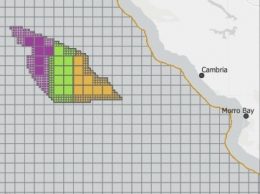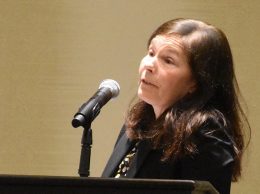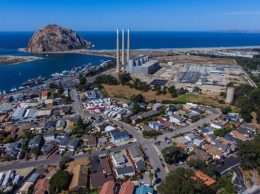Feds, state reach agreement for Morro Bay offshore wind project
IN THIS ARTICLE
- Central Coast Topic
- Marissa Nall Author
By Marissa Nall Tuesday, May 25th, 2021

The U.S. Department of Defense gave the green light on May 25 to 3 gigawatts of offshore wind energy development off the coast of Morro Bay, culminating a years-long collaboration between state and federal regulators to advance the industry on the West Coast.
U.S. Secretary of the Interior Deb Haaland and California Gov. Gavin Newsom announced plans during a morning news conference to permit floating wind turbines in 399 square miles of water near Morro Bay and in the Humboldt area of Northern California, producing a total of 4.6 gigawatts of energy.
State and local regulators have pursued offshore wind development since 2016, and a formal call for information by the Department of the Interior in 2018 received bids from around a dozen developers for two areas near Morro Bay and the Diablo Canyon Nuclear Power Plant. But the effort hinged on a decision by the Department of Defense, which conducts critical naval live-fire testing and training operations in waters off the San Luis Obispo County coast.
Negotiations with a task force that included the Bureau of Ocean Energy Management, California legislators and energy regulators, industry and local government aimed to identify potential developments that would be compatible with the U.S. Navy’s operational needs.
Undersecretary of Defense Colin Cole said May 25 that the DOD views climate change as a threat to U.S. defense both at home and abroad. The talks, Cole said, determined that “any negative effects were mitigated and certainly balanced against the imperative of moving in a clean energy direction.”
The state expects to invest tens of millions of dollars into accelerating the environmental review and permitting process, Newsom said.
“We’re looking to scale this vision,” he said.
The task force will meet in June to discuss the timeline and leasing process, Haaland said. The effort follows an executive order issued by President Joe Biden in January that directed the Department of the Interior to double offshore wind energy production by 2030 and the approval of the Vineyard Wind proposal off the coast of Massachusetts that would generate around 800 megawatts of energy.
Her office plans “to expeditiously and responsibly advance offshore wind energy,” Haaland said, calling it a “promising avenue for diversifying our energy portfolio to help combat climate change and create clean energy jobs.”
The 84-turbine Vineyard Wind project is estimated to generate around 3,600 jobs. Comparatively, development near Morro Bay could be as large as 380 turbines, Newsom said.
“The magnitude of the investment, the job creation, is quite significant,” he said.
The project would also continue the state’s transition away from nuclear energy as the Diablo Canyon plant in San Luis Obispo County nears closure, Newsom added, and address reliability problems with solar energy developments.
Utility owner Pacific Gas & Electric chose not to renew its Nuclear Regulatory Commission licenses for Diablo Canyon in 2016, and plans to launch a decommissioning effort in 2024 and 2025 when the licenses expire. The company submitted a land use application to San Luis Obispo County in March for the decommissioning process, which is expected to cost around $4 billion.
Morro Bay and Diablo Canyon were identified as prime locations for offshore wind developments because of the existing energy infrastructure and grid connections.
The renewable energy developments would also address issues of environmental justice, Newsom said, describing the plan as a “game-changing investment in a green energy future … not impacting diverse communities but benefiting diverse communities up and down the state of California.”
“This potential project will help secure the Central Coast’s dominance as a renewable energy powerhouse, which will attract new businesses and good paying, future-oriented jobs in a burgeoning sector of the economy,” U.S. Rep. Salud Carbajal, D-Santa Barbara, said in a news release.
Carbajal helped lead the wind energy task force and pass an amendment to the fiscal 2021 National Defense Authorization Act to further negotiations with the Navy.
“The future is in renewable energy, and the Central Coast is leading the way,” he said.











